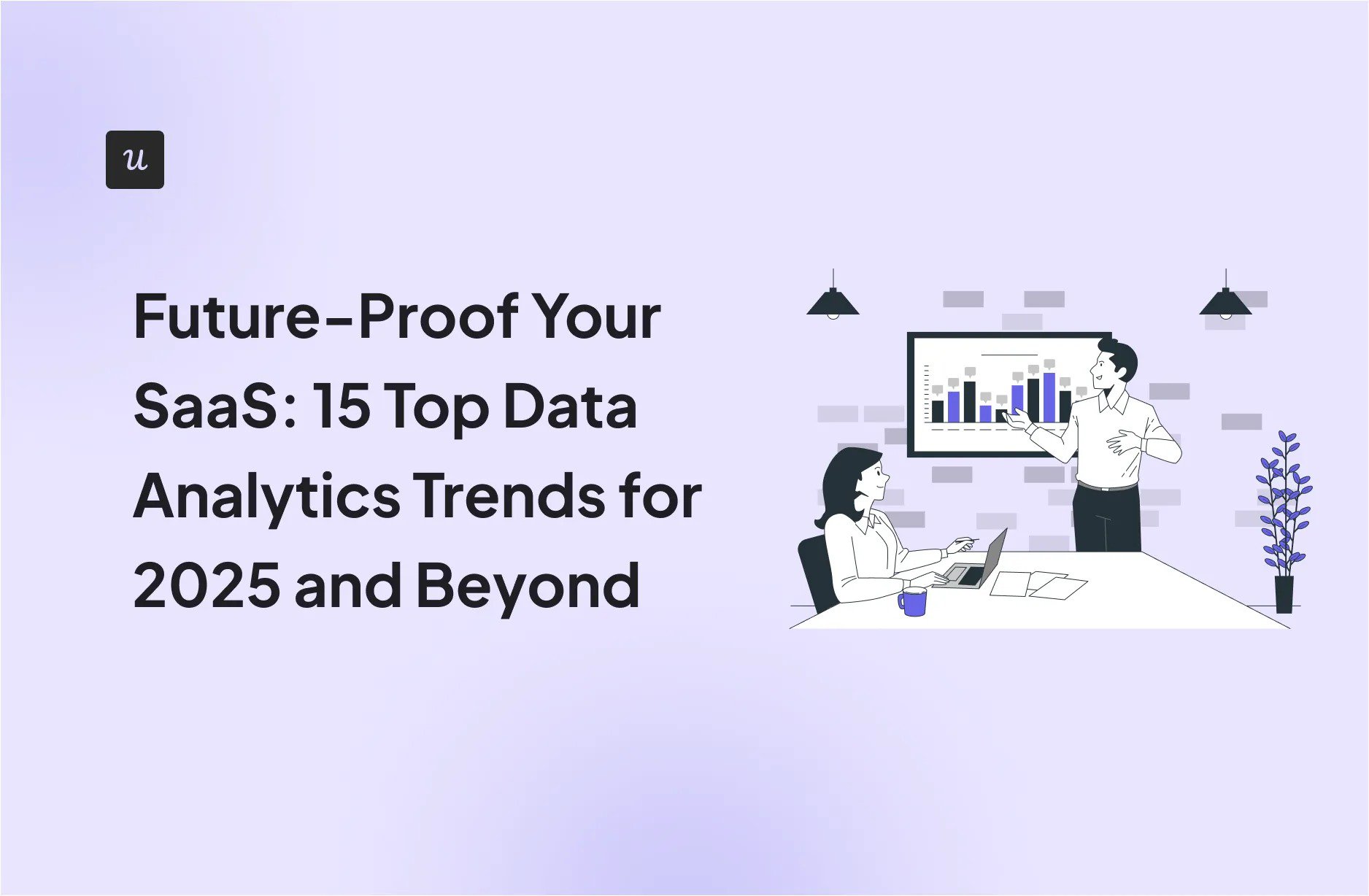
Future-Proof Your SaaS: 15 Top Data Analytics Trends for 2025 and Beyond
Your SaaS business is generating more data than ever. But it won’t give you a competitive edge if it’s just accumulating in dashboards that no one really checks. And you’re not alone—94% of organizations believe their business should get more value from the available data.
So how do you turn all that raw data into actionable and practical insights? By staying on top of the newest data analytics trends.
We’ll break down the most prominent data analytics trends and understand how forward-thinking SaaS companies can adopt them.
Try Userpilot Now
See Why 1,000+ Teams Choose Userpilot

Why invest in data analysis for your SaaS?
SaaS organizations already sit on a goldmine of data. Analyzing the raw data can help you make concrete decisions regarding product development, user onboarding, and more. It’s particularly helpful in the following cases:
- Optimizing performance: Slow load times and frequent crashes can frustrate users. Real-time analytics helps identify and fix these performance issues before they drive users away.
- Enhancing customer experiences: Analyzing behavioral data helps you understand (and even anticipate) user needs, preferences, and pain points. This business intelligence helps you delight users with personalized guidance and interactions, ultimately improving the user experience.
- Driving strategic decisions: Still relying on guesswork to scale your business? Use predictive analytics to identify hidden patterns and trends and make smarter, data-backed decisions for growth.
15 Trends in data analytics shaping SaaS businesses
Advancements in generative AI, zero-trust security, and other technologies guide how SaaS companies collect and process data, making insights more accessible, secure, and actionable.
Let’s explore the key trends shaping the future of SaaS data analytics.
1. Generative AI-powered predictive analytics
According to a Gartner survey, 40% of business leaders are already using Gen AI in their data and analytics (D&A) functions.
Predictive analytics, on the other hand, helps businesses forecast future outcomes based on historical data. Gen AI models can help simulate complex data scenarios and minimize forecasting errors. That, in turn, allows SaaS organizations to predict customer behavior and market trends accurately.
For instance, AI-powered CRM platforms can preempt churn and implement data-backed retention strategies. Similarly, financial planning tools can simulate economic conditions to guide investment decisions.
2. Embedded analytics
Modern SaaS solutions integrate a data analytics layer within the application. These tools can collect, store, and process data without third-party analytics tools.
Embedded analytics offers several benefits, including access to real-time insights and improved data visualization and reporting. With up-to-date metrics always at your fingertips, you can make swift and efficient decisions regarding user engagement, product adoption, and more.
3. Collaborative analytics platforms
The growing adoption of hybrid work is also driving the demand for collaboration-friendly analytics tools. Businesses want data analytics solutions that let cross-functional teams collaborate on data projects with ease.
With collaborative analytics solutions, data sharing is a breeze. You can share insights, dashboards, and reports in real time, minimizing the risk of data inconsistencies. They also promote transparency and speed up decision-making.
For instance, Userpilot lets you create custom dashboards to track and analyze user data. Any team member can access these dashboards to pull up relevant metrics and reports.
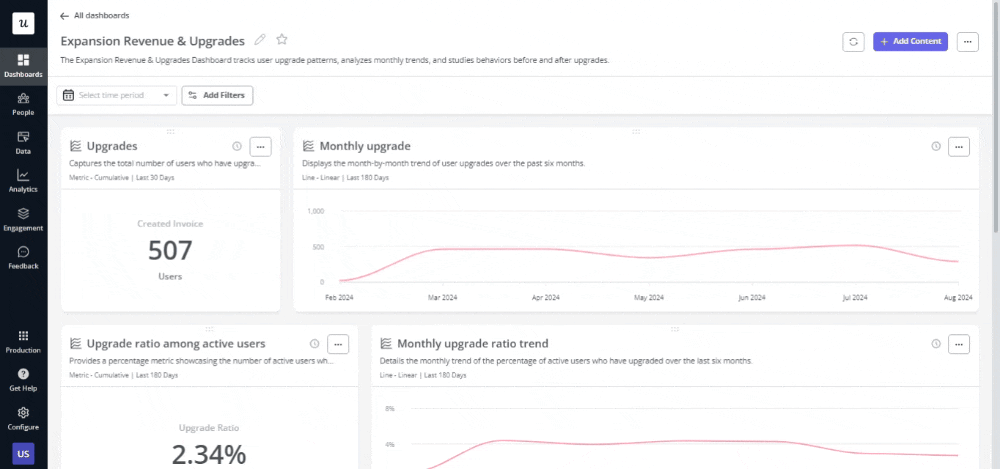
4. Enhanced data security and regulatory compliance
SaaS data breaches affect more than 30% of organizations worldwide. These incidents have far-reaching legal and financial consequences. Plus, they take a toll on brand reputation and customer trust.
The widespread adoption of data analytics in SaaS emphasizes the need for advanced compliance and security measures.
Techniques like data encryptions and role-based access controls help protect sensitive user details. They’re also useful for adhering to data privacy regulations, such as GDPR, CCPA, and HIPAA. AI-powered threat detection and compliance automation can come in handy, too.
5. Zero trust analytics
We can’t talk about data security and not mention zero trust as one of the most important data analytics trends. A Gartner survey reports that 63% of organizations have fully or partly deployed a zero-trust strategy.
Perimeter-based security measures, such as firewalls and VPNs, are based on the concept of implicit trust. Zero-trust security, on the other hand, is based on the principle of “never trust, always verify.”
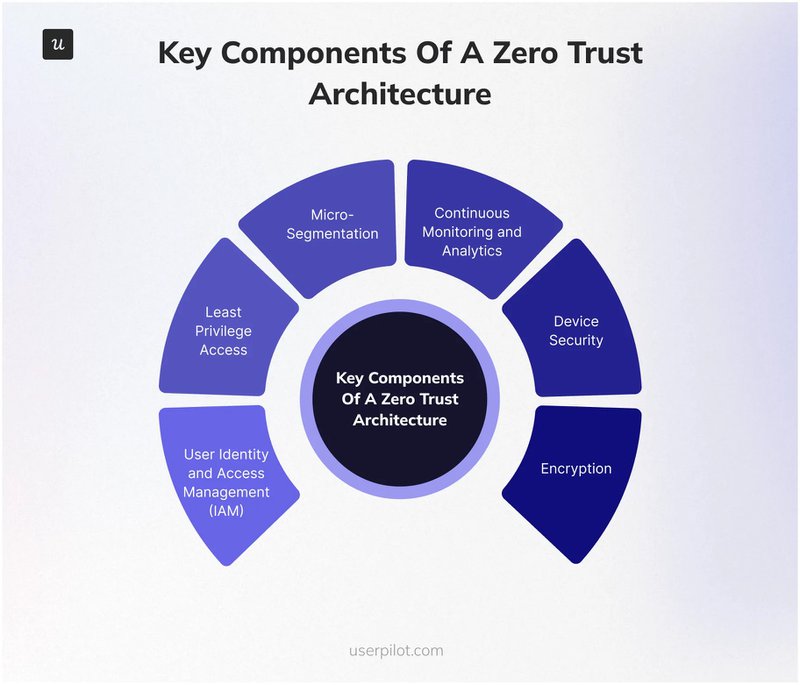
It relies on the continuous verification of user identities and access permissions to prevent unauthorized access to sensitive data. Additionally, continuous threat monitoring helps detect insider threats and cyberattacks in real time and ensures timely mitigation.
6. Synthetic data generation
Analytics tools are only as good as the data available to them. How do you make the most of data analytics without jeopardizing sensitive information? The answer is synthetic data.
Generative AI models are being used to create synthetic data that mimics real-world scenarios but doesn’t contain actual user details. The artificial data is then used to train machine learning models, test SaaS applications, and analyze product usage.
Synthetic data generation provides a cost-effective and scalable way to leverage analytics while protecting user privacy. It isn’t surprising that by 2026, 75% of businesses are expected to create synthetic customer data using Gen AI. That’s a significant jump from less than 5% in 2023.
7. Personalized customer experiences
A one-size-fits-all customer experience isn’t enough to motivate business users to renew their subscriptions.
Modern consumers don’t want to be treated like statistics. 81% expect hyper-personalized experiences that speak to their unique needs and pain points.
Analyzing customer behavior data and feedback can help you tailor interactions, content, and offerings for each individual. It’s the key to improving user engagement, satisfaction, and retention.
Plus, with personalized product recommendations and contextual guidance, you can tap into new upselling opportunities. For instance, Userpilot lets you identify power users and target the segment with personalized offers:

8. Self-service analytics
Traditional data analytics involves a fair share of coding and is, therefore, out of reach for non-technical users. Marketing, sales, and customer success teams have to depend on IT for data analysis and reporting, which is inefficient and time-consuming.
As SaaS companies become more dependent on data, one of the other data analytics trends that are growing in popularity is the need for self-service analytics. With intuitive interfaces and drag-and-drop functionality, self-service analytics tools let users visualize data and generate custom reports with a few clicks.
Non-technical teams no longer have to wait for tech support to analyze their processes and tell them what’s working and what isn’t. Faster access to data-driven insights speeds up decision-making, too.
9. Augmented analytics
You perform retention analysis and find that user retention rates have increased by 20% since the previous year. Did it happen because you invested in personalization? Or was it due to the new features you launched? Or did the revamped in-app help center work its magic?
Augmented analytics helps you read between the lines and understand what your data is trying to tell you. It uses ML and NLP to automate data processing, discovery, and sharing and makes data analysis accessible to non-technical users.
With augmented analytics, you can use queries in natural language to create reports with relevant metrics or generate predictions. The increasing dependence on augmented analytics is evident from its exponential market growth, which is projected to cross $173 billion by 2032.
10. Advanced data visualization
Visualization plays a major role in data science, and its options are no longer restricted to graphs and charts. For complex datasets, you need immersive visualization tools that use augmented reality (AR) and virtual reality (VR) interfaces.
Advanced visualization techniques, such as 3D plots and interactive dashboards, improve data comprehension and help spot trends accurately. Userpilot simplifies complex data analysis through intuitive dashboards and easily understandable data sets. For instance, you can use funnel path analysis to identify precise factors that drive users away.
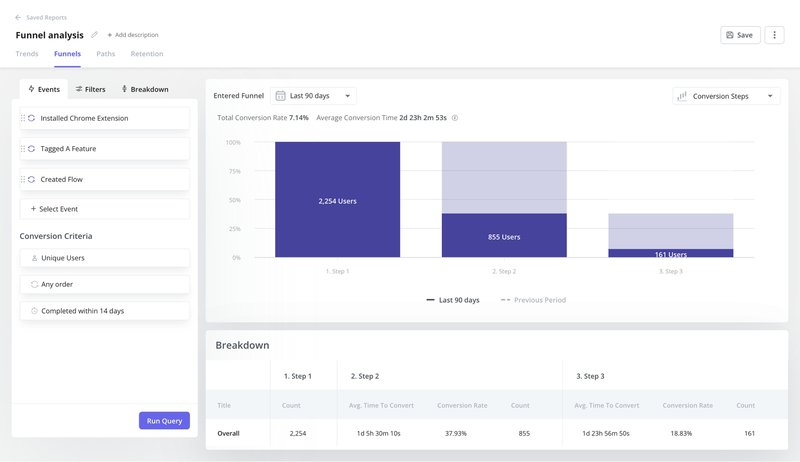
11. Automated data governance
Data governance outlines parameters and policies for maintaining data quality, accuracy, and privacy. However, enforcing these standards can be difficult in the chaos of managing vast datasets.
A 2024 survey revealed that 45% of UK and US firms considered their organization’s data governance to be ineffective. Additionally, 60% of organizations also reported that their governance policies didn’t align with business strategies, leading to outdated data and inefficient decision-making.
Automated governance is the solution to these challenges. It uses AI and ML to enforce data standards, track data quality, and monitor compliance in real time. It minimizes errors due to human oversight and improves data reliability.
12. Natural language processing (NLP) in data analytics
Modern analytics tools allow you to interact with data through simple, natural language queries. That, in turn, makes data exploration accessible to all stakeholders, regardless of technical prowess.
Instead of relying on complex SQL queries, you can simply ask questions like, “What were our best-performing features in the last quarter?” and retrieve relevant insights.
NLP-driven analytics can be crucial to improving the adoption of data-driven strategies in cross-functional teams within SaaS companies.
13. Edge computing for real-time data processing tasks
Let’s say you want to deliver a targeted onboarding experience to each user based on their responses to a welcome survey. If you wait for the survey responses to reach a remote server where they’re analyzed, you can’t personalize the experience in real time. That, in turn, can frustrate users and increase churn.
Edge computing is the key to minimizing these delays and getting your hands on real-time insights. It processes data closer to its source, reducing latency and bandwidth usage. According to an Accenture survey, 65% of companies already used edge computing in 2023. Another 83% also believed that it would give them a competitive edge in the future.
It’s particularly crucial for SaaS applications that depend on immediate decision-making to improve the user experience.
14. Metadata-driven data fabric
Organizations managing vast amounts of data need a streamlined approach to integrate, govern, and analyze it. Metadata-driven data fabric automates data management by using metadata to classify, connect, and optimize data flows.
The use of metadata streamlines data integration and helps identify data opportunities and issues. Plus, it minimizes the need for manual intervention and accelerates project times.
For instance, if your customer behavior data is spread across multiple platforms, you can use a metadata-driven data fabric to automatically identify redundant datasets, unify fragmented records, and surface quality issues.
15. Data literacy and training programs
Even the most feature-rich data analytics tools won’t offer much value when your employees can’t use them. As SaaS companies become more dependent on data-driven workflows, improving data literacy within your organization is a must.
Unfortunately, only 35% of businesses have a strong data culture, with inconsistent support and education being the prime reason for failure.
Invest in training programs and AI-assisted tools to enhance your team’s ability to understand and leverage data effectively. Help them understand how to use data-backed decisions in their daily tasks. Finally, build a culture of continuous learning so employees can adapt to the fast-changing landscape of data analytics.
Master data analytics with Userpilot
Userpilot’s product analytics features can help you make the most of all the data in your hands. Here’s how:
- With autocapture, track all events in your app automatically after setting up Userpilot. That makes it easier to monitor user actions and behavior and perform retroactive analysis. The best part—it doesn’t require coding, so even non-technical users can use the feature. You don’t have to spend time on data preparation as well. The app takes care of data storage and structure.
- Collect user feedback with various types of in-app surveys, including CSAT, CES, and NPS surveys. Advanced survey analytics lets you tag and filter responses based on recurrent themes and keywords. Additionally, you can segment users based on responses and identify common behaviors and attributes.
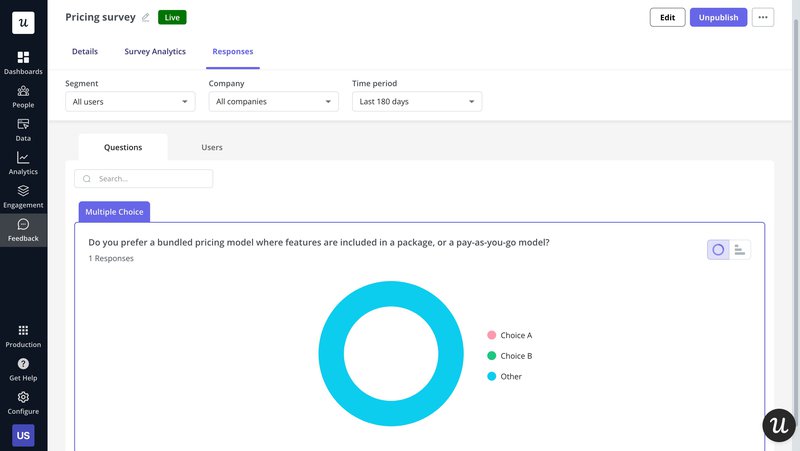
- Set up feature tags and manual events to track user actions. These offer deeper insights into user behavior and friction points in their journey.
- Session replays offer a complete picture of how users interact with your product. You can use them to modify segmentation data in real time, which, in turn, improves data quality. You save a ton of time, too, as all user interactions are captured automatically. Plus, you can add notes and tag team members in recordings, which facilitates easy collaboration.
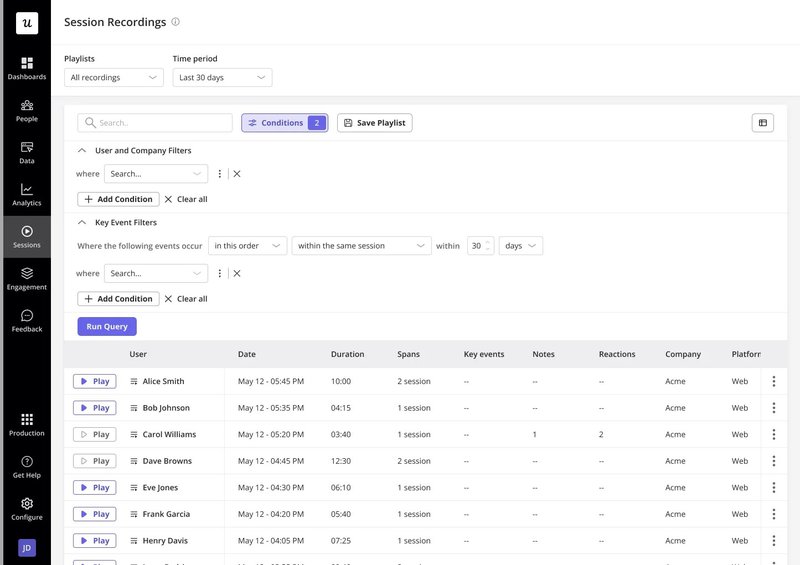
- With A/B testing, experiment with different in-app flows and understand what kind of experiences and interactions generate more engagement.
- There’s also Userpilot’s AI writing assistant, which lets you use generative AI and NLP to create in-app messages in a jiffy. Use it to personalize your communications and deliver a more engaging experience.
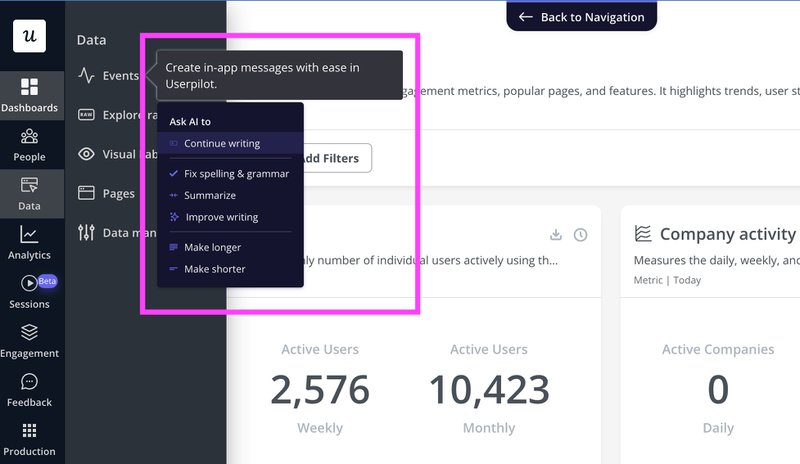
Future-proof your SaaS business with data analytics
Data analytics plays an integral role in building a successful SaaS business. And technologies like NLP, edge computing, and generative AI are shaping how companies extract insights from the data they collect. Collaborative and self-service analytics are making these insights more accessible. And the key to growing your SaaS business? Adapting to these trends.
Userpilot makes this process easier with built-in data analytics features, including event autocapture, session replays, in-app survey analytics, and more. Schedule a demo to see the platform in action.







